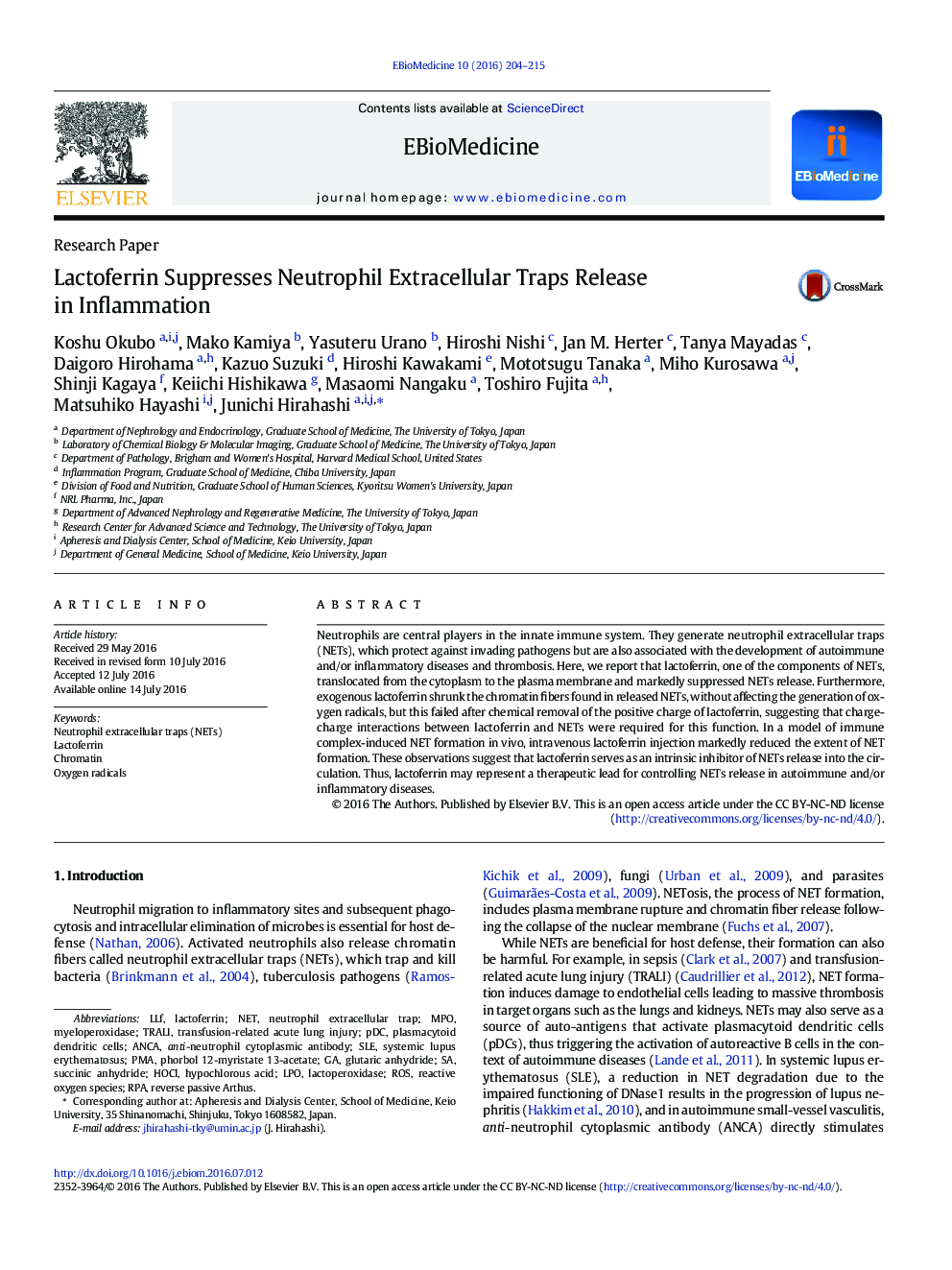| Article ID | Journal | Published Year | Pages | File Type |
|---|---|---|---|---|
| 2120632 | EBioMedicine | 2016 | 12 Pages |
•We developed a real-time cell imaging system which can visualize neutrophil activation, DNA and cell membrane structures.•Lactoferrin serves as an intrinsic inhibitor of neutrophil extracellular traps (NETs) release into the circulation.•Lactoferrin may be a novel therapeutic target in pathological conditions related to NETs.Neutrophils generate neutrophil extracellular traps (NETs), which protect against invading pathogens but are also associated with the development of autoimmune and/or inflammatory diseases and thrombosis. Controlling NETs release is one of the promising therapeutic strategies for the treatment of these diseases. Lactoferrin is a multifunctional protein which is found mainly in human maternal milk, tears, and neutrophils granules and so on. We found that lactoferrin serves an endogenous inhibitor of NETs release into the circulation in inflammatory conditions. Thus, lactoferrin may represent a therapeutic lead for controlling NETs release in autoimmune and/or inflammatory diseases.
Neutrophils are central players in the innate immune system. They generate neutrophil extracellular traps (NETs), which protect against invading pathogens but are also associated with the development of autoimmune and/or inflammatory diseases and thrombosis. Here, we report that lactoferrin, one of the components of NETs, translocated from the cytoplasm to the plasma membrane and markedly suppressed NETs release. Furthermore, exogenous lactoferrin shrunk the chromatin fibers found in released NETs, without affecting the generation of oxygen radicals, but this failed after chemical removal of the positive charge of lactoferrin, suggesting that charge-charge interactions between lactoferrin and NETs were required for this function. In a model of immune complex-induced NET formation in vivo, intravenous lactoferrin injection markedly reduced the extent of NET formation. These observations suggest that lactoferrin serves as an intrinsic inhibitor of NETs release into the circulation. Thus, lactoferrin may represent a therapeutic lead for controlling NETs release in autoimmune and/or inflammatory diseases.
